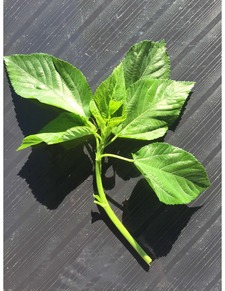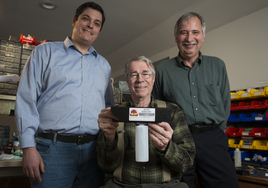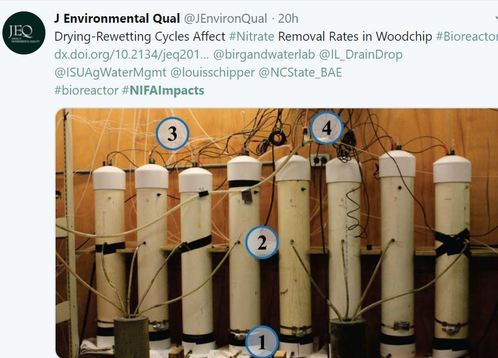|
Having trouble viewing this email? View it as a Web page.

|
|
|
Fresh from the Field is a weekly album showcasing transformative impacts made by partners supported by the National Institute of Food and Agriculture.
Editor: Falita Liles Nov.29, 2018
|
|
Success Stories

Finding New Crops and New Markets
World Farmers of Lancaster, Massachusetts, through connections made by the immigrant and refugee farmers it serves, identified a new, high-demand, high-value, culturally relevant ethnic crop, lalu, and promoted growing the crop. Farmers benefited through high volume sales and included communities primarily East Africans, Somali-Bantus, Kenyans, and Haitians. The consumers enjoyed being able to purchase lalu in their neighborhood stores, markets, and farmers’ markets.
NIFA supports this project through the Beginning Farmer and Rancher Development Program.
Contact: Marie Anthony, World Farmer Organization.
|
News Coverage
 Dewing Right for Food Storage
$10,000 a year. That’s the amount of money Chris Callahan, University of Vermont (UVM) Extension agricultural engineer, predicts his invention could save artisanal cheese and meat producers. Produce growers would save too: an annual average of $6,500. The invention, “DewRight,” measures temperature and humidity in high-humidity environments, like those required by food storage and processing facilities. Existing sensors give readings that may be off by as much as 6 percent and have a high failure rate in high-humidity environments. DewRight improves that accuracy by 67 percent and uses a design more suitable to that environment. This can result in reduced spoilage and increased yield and quality. Vermont Energy Control Systems took Callahan’s patent to the next level by working with UVM Innovations to license and develop it commercially. DewRight is currently in use at 10 facilities.
NIFA supports this research effort through Capacity and Smith-Lever funding.
Contact: Chris Callahan, University of Vermont Extension.
|
Library
 Students Trained in Seafood Safety
Before a bowl of clam chowder or a freshly grilled swordfish steak ends up on a restaurant diner's plate, specially trained seafood handlers will eliminate risk of contamination or hazards that could cause illness.
Three-day training courses take place at the Connecticut or Rhode Island Sea Grant offices. Completion of the Hazard Analysis Critical Control Point (HACCP) classes are required by a 1997 Food and Drug Administration regulation. Back at their workplaces, participants write site-specific plans to reduce potential seafood safety hazards for their products, applying HACCP principles.
The training certifies 75 to 100 seafood processors and regulators each year, and has trained more than 2,000 individuals over the past 20 years. Participants build experience developing plans for different seafood products as a group exercise to help them immediately apply what they learn once they return to their own businesses.
Read more at the University of Connecticut's web page.
Contact: Stacey Stearns, University of Connecticut.
|
Tweet of the Week
#NIFAIMPACTS

|
|

NIFA’s mission is to invest in and advance agricultural research, education, and extension that solve societal challenges. NIFA’s investments in transformative science directly support the long-term prosperity and global preeminence of U.S. agriculture. To learn more about NIFA’s impact on agricultural sciences, visit www.nifa.usda.gov/Impacts, sign up for email updates or follow us on Twitter @USDA_NIFA, #NIFAImpacts.
USDA is an equal opportunity lender, provider, and employer.
|
|